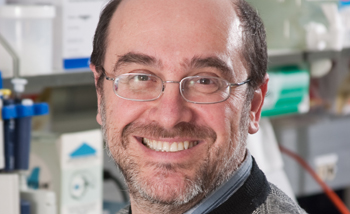Drug delivery methods that use nanoparticles to target diseased cells and spare healthy ones have become a hot focus area in research in the past decade.
 |
Alexander “Sasha” Kabanov, Ph.D., D.Sc. |
Since 2003, Dr. Kabanov has hosted the International Nanomedicine and Drug Delivery Symposium. The yearly gathering of world leaders in nanomedicine will be held in Omaha from Oct. 3-5 — the third time it’s been held here.
Below, Dr. Kabanov discusses nanomedicine and the conference.
What is nanomedicine and why is it important?
Nanomedicine develops tiny materials that can enter diseased cells and kill them. When nanomaterials carry both a drug and imaging molecules, you can watch where they go in the body and sometimes turn them on by remote control once they reach their targets. Nanomedicine is linked to drug delivery and therapeutics, but there are areas growing beyond these fields, such as the use of nano-materials in tissue engineering where specially crafted nanomaterials can pattern growth of cell sheets or tissues for tissue regeneration.
|
We develop efficient drug delivery systems to treat many diseases including cancer, rheumatoid arthritis, stroke, Parkinson’s and Alzheimer’s. There is no cure for many of these diseases. Discovering cures could improve lives and help us live longer. Breakthrough treatments also will help maintain the technological leadership of our nation. In Nebraska, it means new companies growing the economy.
What is UNMC doing to advance knowledge in this area?
In 2004, the CDDN formed at UNMC. Perhaps one of first such centers in the world, it now has 32 faculty members working together with about $33 million in federal funding. We are building resources to translate our discoveries to help people.
Tell me about your upcoming conference.
The conference started in 2003 as a mini-symposium when a Japanese delegation visited UNMC. Since then it has been hosted in five other North American cities. Oriented for students and young scientists, the conference offers poster and oral presentations and a session called “Nanomedicine Research Reports,” where junior scientists give talks along with accomplished stars. These sessions are sometimes the most interesting ones.